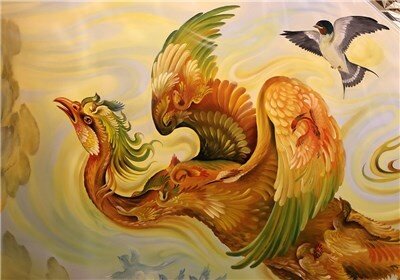April 13 marks Attar's National Day in Iran to commemorate the prominent Persian poet and philosopher, Attar of Nishapur. As a Sufi in his works, Attar intermingles the sublime with the mundane, the spiritual with the worldly, while his poems imply the soul’s escape from the mind’s rational embrace.
Iran (IMNA) - Farid al Din Muhammad Ibrahim also called Attar widely well known as a Persian poet, Sufi and mystical philosopher composing at least 45,000 couplets and many notable prose works. He had an immense influence on Sufism and Persian poetry as considered by Rumi to be the master of Sufi mystic poet.
As a young man, Farid al-Din traveled to different countries and visited Syria, Arabi, India, Egypt and Central Asian. Finally, he settled in Nishapur, his native town in northeastern Iran. Further, his name “Attar” literally means a perfumer or apothecary concerning his father and grandfather’s trade.
Attar is best known for an epic poem that is a brilliant allegorical tale implying the soul’s search for meaning. This masterpiece is called Manteq al tayr (The Conference of the Birds) describing the perilous journey and quest of the world’s birds to the faraway peaks of Mount Qaf for the Simorgh (mythical Persian bird equivalent to Western Phoenix), whom they wish to make their king, i.e., God. Finally, the birds that have survived the journey, contemplating their reflections in the countenance of the Simorgh, realized that Simorgh and they are just one.

In this regard, Sholeh Wolpé, Iranian-American poet and translator points out:
"When the birds hear the description of these valleys, they bow their heads in distress; some even die of fright right then and there. But despite their trepidations, they begin the great journey. On the way, many perish of thirst, heat or illness, while others fall prey to wild beasts, panic, and violence. Finally, only thirty birds make it to the abode of Simorgh. In the end, the birds learn that they themselves are the Simorgh; the name “Simorgh” in Persian means thirty (si) birds (morgh). They eventually come to understand that the majesty of that Beloved is like the sun that can be seen reflected in a mirror. Yet, whoever looks into that mirror will also behold his or her own image."

If Simorgh unveils its face to you, you will find
that all the birds, be they thirty or forty or more,
are but the shadows cast by that unveiling.
What shadow is ever separated from its maker?
Do you see?
The shadow and its maker are one and the same,
so get over surfaces and delve into mysteries
Your Comment